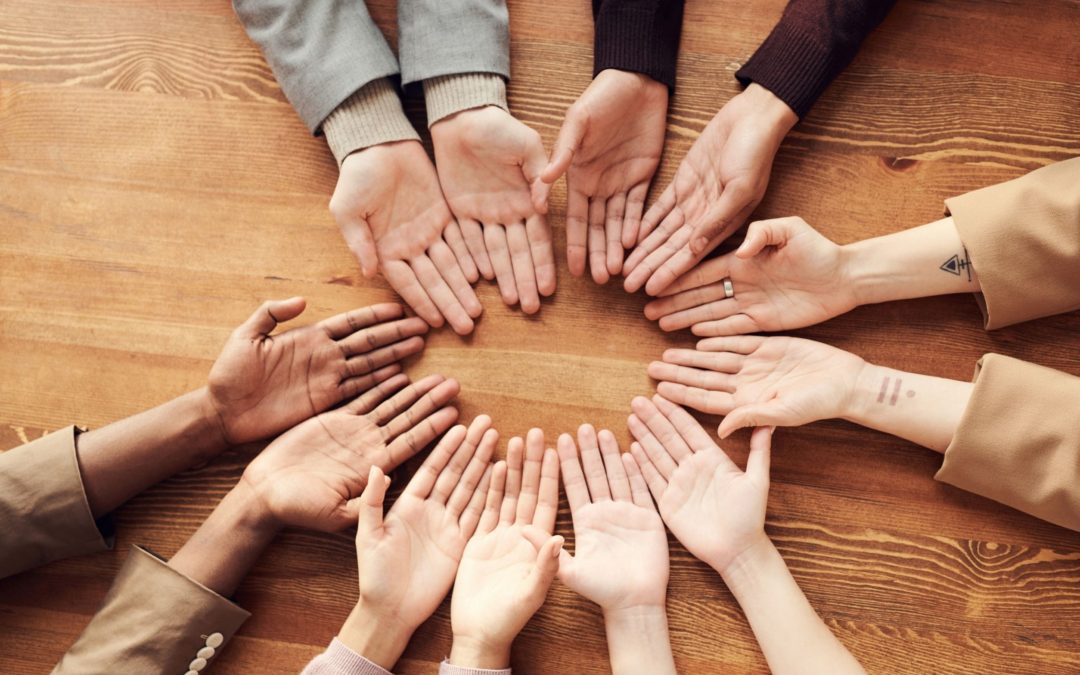A closer look at the Power Difference Model (PDM) copyright by The Sum–a 501c3 in Charlottesville, VA
There are three primary patterns of unconscious bias. We each tend to hold one of these concerning differences: race, gender, culture, disability, religion, class, and sexual orientation. Each of these three patterns has both assets and unconscious limitations—ways these patterns negatively impact others. Ultimately, the goal is for each of us to integrate the assets of all three while becoming aware of, and thereby deliberately limiting, the unconscious limitations! Take the free Race Pattern Quiz on our homepage to discover your primary unconscious bias around race. The 70-item Power of Difference Assessment (PDA) and online consultation can give you deeper information about your patterns, which can be different, in relationship to all 7 of the above-named differences. We call these three patterns: Sensitivity, Oneness, and Strength.
Sensitivity
I value the power of understanding others’ perspectives as the way to safety for all of us. I recognize and deeply value racial and other differences. However, I can over-focus on political correctness out of fear of offending others. Consequently, I can become frozen or confused. In my effort to get others to “get it,” I can become exhausted and patronizing and miss connecting personally. My primary learning edge is courage, powering up, being ferocious in a way that refuses both silence AND violence. This pattern can sound like: “If only we could get our supervisor to take this workshop” or “I’m afraid to say the wrong thing.” This Eracism bumper sticker embodies the kind of message people in Sensitivity want others to understand. There is, of course, an assumption that the person displaying this sticker already understands and treats “all colors with love and respect” and is, therefore, not “part of the problem” and is “clearly not racist.” In this way, systemic racism is reproduced and perpetuated. For a white person, I may need to explore my unconscious privilege and power. For a person of color, finding my “voice” and setting boundaries may be a learning edge.
Oneness
In this pattern, I value the power of unity as the way to safety for all. I identify as a bridge-builder. I can focus so strongly on our common humanity that I can impact others by devaluing and minimizing differences. I may encourage assimilation and therefore, collude with the systemic power of the dominant group. It can sound like: “I don’t see color, I just see people,” “Talking about race just causes divisions,” “The only race I care about is the Human Race!” This “All Lives Matter” poster is a common example of this pattern, typically expressed by white people seeking to downplay racial differences and, however unconsciously, maintain the “normalcy” of whiteness. If I am a person of color in this pattern, I may have found it necessary to downplay my own racial difference as a survival strategy. The learning edge for me in this pattern is to make room for others, and/or diverse voices within me, to define the importance of our differences without pressure to assimilate to what someone or some group determines as the norm.
Strength
I value the power of strength and courage as the way to create safety for my “own” group (familial, racial, organizational). I may employ denigration or minimization of other racial groups, dominance, aggression, evaluation of difference, and the identification of “other” as “less than or as “enemy.” I see myself as nobly willing to sacrifice everything for the protection of my “own” and the “truth.” My learning edge: unity, oneness, common humanity, connection to all people. The Strength pattern can sound like: “People should just stop complaining and take care of business” or “the real problem is reverse discrimination.” Author Lieutenant Colonel Dave Grossman expresses this value for this warrior archetype being ready to protect the “sheep” against the “wolf.”

How to Eliminate Unconscious Bias
Whatever our primary pattern with regard to race and/or other differences, we have found that we tend to have a particular learning edge as described above. For Oneness, it tends to be Sensitivity. For Sensitivity, it tends to be Strength. For Strength, it tends to be Oneness. The more I’m able to learn, internalize, integrate, and leverage the power of the primary assets of all three patterns, particularly the one that is my learning edge, the more I’m able to eliminate unconscious bias AND:
- Experience greater effectiveness across differences.
- Have a clear mission and feel empowered.
- Call others to increased internal integration without blame and shame.
- Live from solidarity across our differences…refusing silence and violence.
- Experience less rising and falling on external conditions and greater internal stability.
- Impact others the way they intend–across our differences and our common humanity.
- Feel pride without prejudice.
“Home is a place we all must find. It’s not just a place where you eat or sleep. Hope is knowing your mind, your heart, your courage. If we know ourselves, we’re always home anywhere.” ~ Glinda the Good Witch

 Elliott Cisneros
Elliott Cisneros  Carla Sherrell
Carla Sherrell